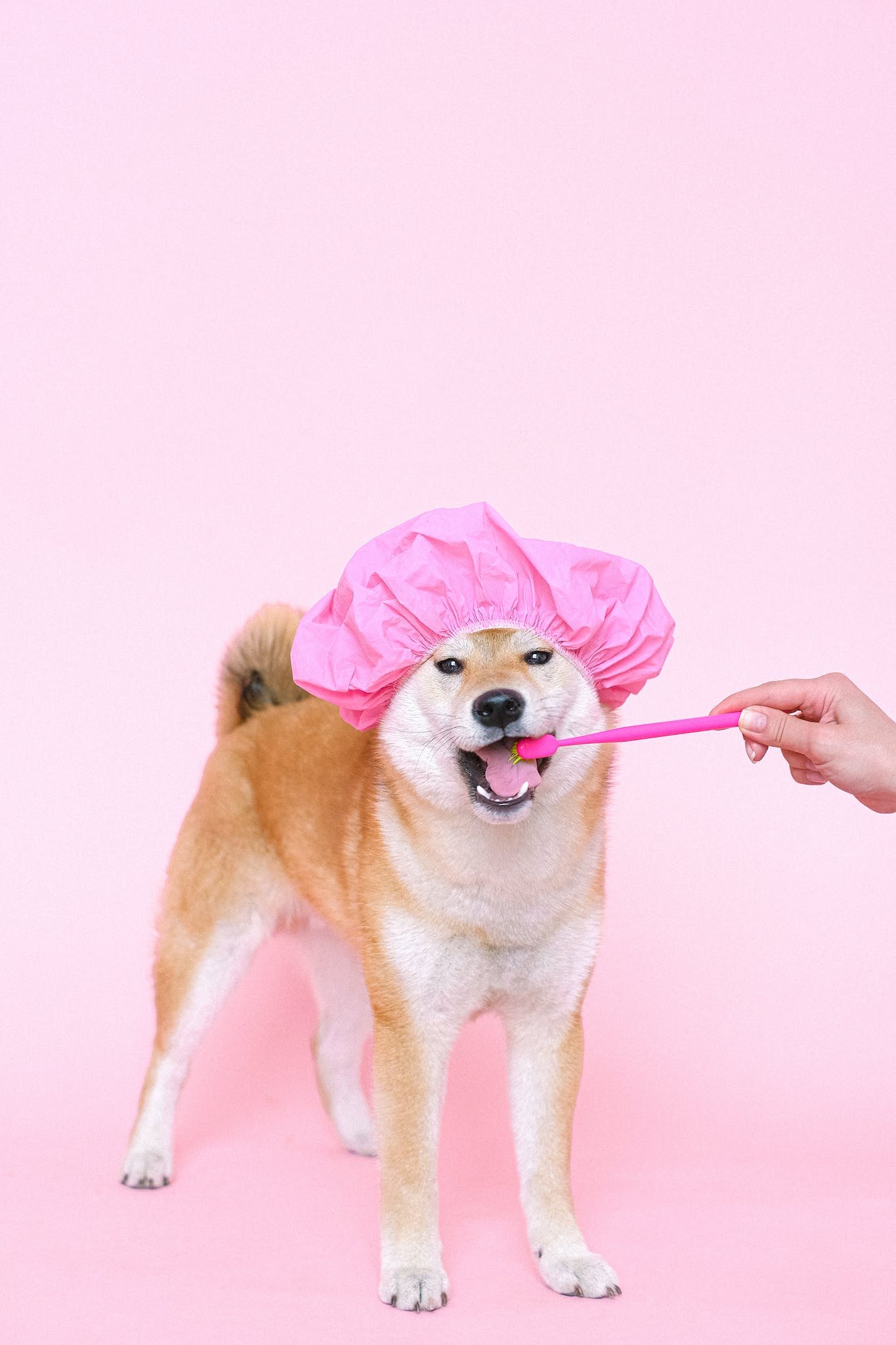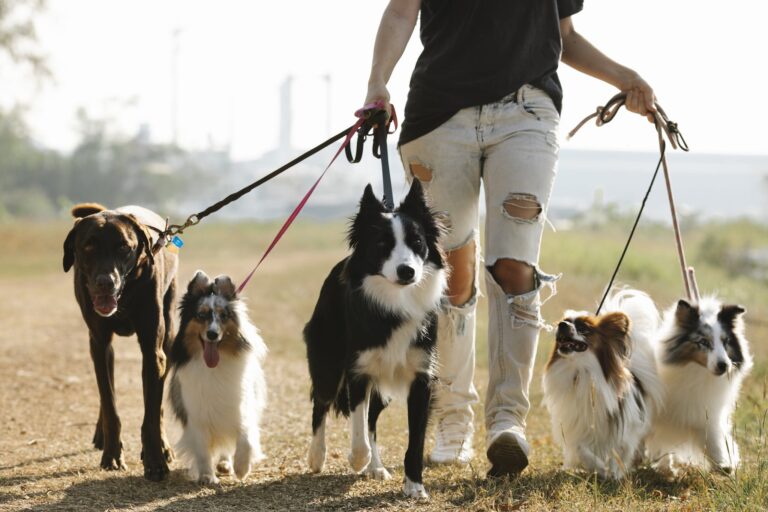Puppy Training in 7 Easy Steps: Everything You Need to Know to Raise the Perfect Dog
Introduction
Welcome to the chaotic yet heartwarming world of puppy training! If you’ve just welcomed a furball into your life, get ready for a rollercoaster ride. In this guide, we’ll dive into the art of puppy training, peppered with anecdotes, a sprinkle of imperfections, and a casual chat about raising the perfect canine companion.
Setting the Stage for Paw-some Training
Puppy Tales and Wiggly Tails
Let’s kick off with some puppy tales. Your four-legged friend is not just a pet; it’s a bundle of joy wrapped in fur. Share some love, and get ready for wagging tails and puppy eyes as you embark on this training adventure.
The Imperfections of Puppy Parenthood
Before we dive into training, let’s address the elephant in the room—imperfections. From occasional accidents to chewed shoes, puppy parenthood comes with its share of chaos. Embrace it; imperfections are the spice of this journey.
The Basics: Sit, Stay, and Shake Paw
Sit Happens (Sometimes)
Teaching your puppy to sit is like trying to nail a yoga pose with a hyperactive partner. It’s a process, not a one-time event. Be patient, use treats as bribery—I mean motivation—and celebrate the little victories.
Stay: A Challenge for Puppies and Humans
Getting your puppy to stay is like asking a toddler to resist candy—it’s tough! But fear not, we’ll explore tricks and treats to make ‘stay’ a part of your puppy’s vocabulary.
Shaking Paws or Waving the White Flag?
Ah, the classic paw shake. It’s not just a trick; it’s a handshake, a pact between pals. Unveil the secrets of teaching your pup to shake hands and seal the deal with a treat.
The Potty Dance: Navigating the Great Indoors
Accidents Happen (More Than You Think)
Potty training is like being a detective—always on the lookout for suspicious sniffing. Accidents will happen, but we’ll tackle them with humor and a mop.
The Art of Timing and Treats
Puppy bladders have their own agenda. Learn the art of timing your outdoor excursions and reward your pup like they just discovered a cure for boredom.
Leash Learning: A Walk on the Wild Side
Leashes, Zoomies, and Tug-of-War
The leash, a symbol of control and chaos. Embrace the tug-of-war battles and spontaneous zoomies. This is the time to discover the wild side of your furry explorer.
Training Humans to Walk Dogs
Ever felt like your pup is walking you? Fear not, we’ll flip the script. Learn the art of leash etiquette and turn your walks into a harmonious duet.
Barking Bootcamp: Woofs, Whines, and Woes
Barking: The Language of Puppies
Barking is a puppy’s way of saying, “Hey, I’m here!” But deciphering the woofs from the whines can be perplexing. Let’s decode the barking language and find harmony in the cacophony.
The Silent Agreement: Bark Less, Treat More
Silence is golden, especially when it comes to incessant barking. Discover the secrets to a bark-less household, where treats flow like water, and serenity reigns.
Mastering Commands: From Rookie to Pro
Commands and Confusion
Mastering commands is a dance of communication. Sometimes your pup will nail it, and other times, they’ll look at you like you’re speaking a different language. It’s all part of the journey.
Consistency: The Key to Canine Comprehension
Consistency is your secret weapon. Whether it’s ‘sit,’ ‘stay,’ or ‘roll over,’ repetition and consistency will turn your pup into a command connoisseur.
The Grand Finale: A Graduation in Puppy Excellence
Celebrating Small Wins
Every small achievement deserves a celebration. From the first successful ‘sit’ to a flawless leash walk, savor the victories, no matter how minor.
Bold and Beautiful Graduation Table
Here’s where your pup officially graduates from the School of Puppy Excellence. Bold and beautiful, just like your furry scholar.
Conclusion: Tail-Wagging Success
As we wrap up our crash course in puppy training, remember, perfection is overrated. Embrace the imperfections, celebrate the victories, and enjoy the journey of molding your furry friend into the perfect companion.
Frequently Asked Questions
Q1: How long does it take to train a puppy?
Training timelines vary, but patience is key. Some tricks may take a few days, while others may need weeks of practice.
The time it takes to train a puppy can vary widely depending on factors such as the puppy’s age, breed, temperament, and the consistency of training. Basic obedience training can start as early as 8 weeks of age, but it’s important to keep training sessions short and engaging, considering a puppy’s short attention span.
Puppies generally have a limited attention span, so training sessions should be kept brief and enjoyable. Aim for 5-10 minute sessions several times a day. As the puppy grows older, you can gradually increase the duration of training sessions.
Consistency is key when training a puppy. Use positive reinforcement techniques, such as treats, praise, and toys, to reward good behavior. Be patient and repeat commands consistently. It’s important to focus on basic commands like sit, stay, come, and leash training initially.
Socialization is also crucial during the puppy training period. Expose the puppy to various environments, people, and other animals to help them develop positive behaviors and reduce fear or anxiety.
The overall training process can take several weeks to months, and ongoing reinforcement and practice are essential for maintaining good behavior. Keep in mind that every puppy is unique, so progress may vary. Additionally, enrolling in puppy training classes or seeking guidance from a professional dog trainer can be beneficial in ensuring effective and efficient training.
Q2: Is it okay to use treats for training?
Absolutely! Treats are like gold stars for your pup. Use them wisely, and your dog will be the Einstein of the canine world.
Yes, using treats for training can be a highly effective and positive way to reinforce good behavior in dogs, including puppies. Treats act as a reward and motivation, making the learning experience enjoyable for the dog. Here are some guidelines on using treats for training:
- Choose High-Value Treats: Use treats that are especially appealing to your dog. These could be small, soft, and easy-to-chew treats. High-value treats make the reward more enticing for the dog.
- Small Portions: Keep treat portions small to prevent overfeeding. You want the treat to be a quick and enjoyable reward, not a full meal.
- Timing is Crucial: Immediately reward the behavior you want to reinforce. The timing of the treat is crucial for the dog to associate it with the desired action.
- Varied Rewards: While treats are effective, it’s a good idea to vary the rewards. Use verbal praise, petting, or a favorite toy to keep the training sessions interesting.
- Fade Out Treats Gradually: As your dog becomes more proficient in a particular behavior, you can gradually reduce the frequency of treat rewards. This helps prevent over-reliance on treats in the long term.
- Consistency is Key: Be consistent in your use of treats. If you reward a behavior one day and ignore it the next, it can confuse the dog. Consistency helps the dog understand what is expected.
Remember that treats are just one tool in the training toolbox. Positive reinforcement, which includes treats, praise, and play, is generally considered an effective and humane method for training dogs. Always be patient, use positive reinforcement, and tailor your training approach to your dog’s individual needs and preferences. If you have concerns or questions, consulting with a professional dog trainer can be beneficial.
Q3: What if my puppy doesn’t respond to commands?
Don’t fret. It’s normal for puppies to be a bit clueless at first. Adjust your training methods, be consistent, and celebrate small wins.
If your puppy is not responding to commands, there could be various reasons, and addressing the issue requires patience, consistency, and sometimes a reassessment of your training approach. Here are some tips to help if your puppy isn’t responding to commands:
- Check for Distractions: Puppies, especially young ones, can easily be distracted by their surroundings. Ensure that you are in a quiet and relatively distraction-free environment when you’re trying to train your puppy.
- Use High-Value Rewards: Make sure you are using enticing treats or rewards that your puppy finds particularly appealing. High-value treats can increase motivation and make the training more successful.
- Be Consistent: Dogs thrive on routine and consistency. Ensure that you are using the same commands consistently and reinforcing the behavior each time it occurs. Inconsistency can confuse your puppy.
- Shorter, More Frequent Sessions: Puppies have shorter attention spans, so keeping training sessions short and frequent can be more effective. Aim for 5-10 minute sessions multiple times a day.
- Break Down Commands: If your puppy is struggling with a particular command, consider breaking it down into smaller steps. For example, if teaching “stay” is challenging, work on shorter stays before gradually increasing the duration.
- Positive Reinforcement: Focus on positive reinforcement by rewarding your puppy immediately when they exhibit the desired behavior. Positive reinforcement helps to strengthen the association between the command and the action.
- Professional Help: If you find that your puppy is consistently not responding to training or if there are specific behavioral issues, consider seeking help from a professional dog trainer or behaviorist. They can provide personalized guidance and training techniques.
- Health Check: If your puppy suddenly stops responding to commands, it’s a good idea to rule out any potential health issues. Pain or discomfort could be affecting their ability or willingness to follow commands.
Remember, patience is crucial when training a puppy. It takes time for them to understand and consistently respond to commands. Celebrate small successes, and if you encounter challenges, reassess your training methods and make adjustments as needed.
Q4: How do I handle accidents during potty training?
Accidents happen. Clean up without making a fuss, and focus on reinforcing positive behavior outdoors.
Accidents are a common part of the potty training process for puppies. It’s essential to handle accidents calmly and without scolding your puppy, as punishment may create fear and anxiety. Here’s how to handle accidents during potty training:
- Stay Calm: If you catch your puppy in the act of having an accident, avoid getting angry or scolding them. Reacting negatively can create a negative association with elimination and hinder the training process.
- Interrupt Gently: If you catch your puppy in the act, calmly interrupt them with a neutral sound (like a clap) to get their attention. Then, immediately take them outside to the designated potty area.
- Take Them Outside: If you find an accident after it has happened, don’t scold your puppy. Instead, clean up the mess thoroughly to remove any scent markers that might attract them back to the same spot. Take your puppy outside to their designated potty area and wait for them to finish.
- Reward for Outdoor Elimination: When your puppy eliminates outside, praise and reward them immediately. Positive reinforcement helps them associate going to the bathroom outside with positive experiences.
- Establish a Routine: Stick to a consistent feeding and potty schedule. Take your puppy outside frequently, especially after meals, playtime, or waking up from a nap. The more opportunities they have to go outside, the fewer accidents they are likely to have indoors.
- Supervise Closely: Keep a close eye on your puppy, especially during the initial stages of potty training. Use a leash or confine them to a small area if needed. This helps prevent accidents and allows you to intervene quickly if necessary.
- Use Crate Training: Consider using a crate when you cannot supervise your puppy. Dogs instinctively avoid soiling their sleeping area, and crate training can help with the potty training process.
- Consult a Veterinarian: If your puppy continues to have frequent accidents, it’s a good idea to consult with a veterinarian. Health issues, such as urinary tract infections, could contribute to accidents.
Remember that potty training takes time and patience. Consistency, positive reinforcement, and a gentle approach are key elements for successful potty training. If you remain consistent with your efforts, your puppy will likely become reliably trained
Q5: Can I train an older dog using these steps?
Certainly! While puppies might be sponges for learning, older dogs can still grasp new tricks. It might take a bit more time and patience, but it’s never too late to teach an old dog new tricks.
Yes, you can definitely use similar training principles for older dogs. While it might take a bit more time and patience compared to training a puppy, older dogs can learn new behaviors through positive reinforcement and consistent training. Here are some tips for training an older dog:
- Be Patient: Older dogs may have established habits, so it’s important to be patient and understanding as they adapt to new commands and behaviors.
- Use Positive Reinforcement: Positive reinforcement is effective for dogs of any age. Reward desired behaviors with treats, praise, or toys. Older dogs can still be motivated by rewards and will respond well to positive reinforcement.
- Understand Their Background: If you’ve adopted an older dog, try to learn about their previous experiences and training. This can give you insights into their behavior and help you tailor your training approach accordingly.
- Keep Training Sessions Short: Just like with puppies, older dogs may have shorter attention spans. Keep training sessions short and enjoyable to maintain their interest.
- Choose Appropriate Commands: Focus on basic commands initially, and gradually introduce more complex ones. Older dogs can learn new commands, but it may take time for them to grasp and remember them.
- Consistency is Key: Consistency is crucial in training. Use the same commands and reward system consistently to avoid confusion.
- Adapt to Physical Limitations: Older dogs may have physical limitations, so consider their comfort and well-being. Adjust training activities to accommodate any potential limitations.
- Consider Health Issues: If your older dog is not responding well to training, consider the possibility of underlying health issues. Pain or discomfort may affect their ability to learn and follow commands.
- Professional Help: If you’re having difficulty training your older dog, consider seeking help from a professional dog trainer. They can provide guidance tailored to your dog’s specific needs.
Remember that every dog is an individual, and training progress may vary. Older dogs can form strong bonds with their owners and are often eager to please. With patience, positive reinforcement, and consistent training, you can help your older dog learn new behaviors and strengthen your relationship.
So, there you have it—your crash course in puppy training. Grab those treats, put on your patience hat, and get ready for a journey filled with tail wags, puppy hugs, and a bond that lasts a lifetime.





